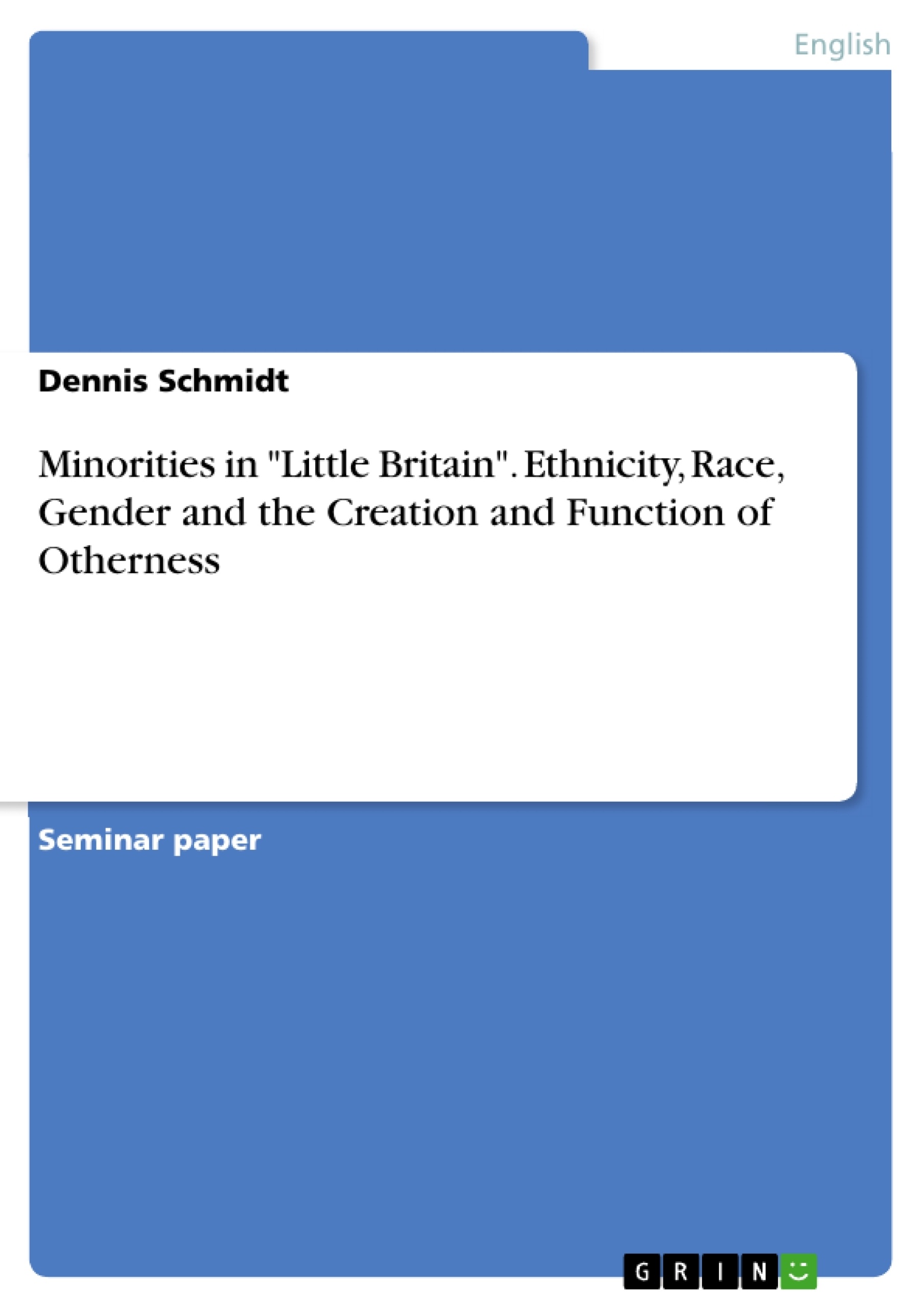"Little Britain" is one of the most popular comedy productions. But what makes it that popular and funny? Without any doubt one considerable reason are the minorities in British society, who become the butt of jokes: Immigrants, homosexuals, transvestites, people with special needs or those of different ethnicity.
Making fun of minorities, however, also evokes criticism: Johann Hari (2005), commentator of The Independent, for instance, claims that “[Little Britain] is cluttered with ugly prejudices“. Thus, the question occurs if Little Britain really entertains on behalf of minorities, implying racism and hate towards minorities.
In this paper I will try to answer this question by introducing Homi K. Bhabha's theory of defining ethnic and racial minorities and by asking if consolidated views on Asians and Africans become the humoristic substance for two main characters in Little Britain, the Asian lady-boy Ting Tong Macadangdang and Marjorie Dawes, the leader of a weight loss support group.
In the next chapter I will focus on gender minorities, who will be introduced by Judith Butler's work on sex and gender. Her performance and performative theory shall help to analyze the two transvestites Emily and Florence and the young homosexual man named Daffyd Thomas from a small Welsh village.
Chapter four summarizes the findings and tries to answer the question how exactly Little Britain works with making fun of minorities.
Table of Contents
- Introduction
- Ethnicity and race – the creation and function of otherness
- "The duplicity of the Asiatic" as humoristic substance
- "The bestial sexual license of the African" as humoristic substance
- Gender as performative act – the creation and function of otherness
- The case of "Emily & Florence" - The performance of gender and transvestism
- The case of "Daffyd Thomas" - The performance of gender and homosexuality
- Conclusion: How Little Britain works with making fun of minorities
Objectives and Key Themes
This paper explores the comedic strategies employed in the British television series "Little Britain" and examines how these strategies relate to the portrayal of minorities. The main objective is to analyze the humor generated through the representation of ethnic, racial, and gender minorities within the context of Homi K. Bhabha's theory of "otherness".
- The role of stereotypes in shaping perceptions of minorities
- The subversion of stereotypical representations through humor
- The interplay between power dynamics and comedic effect
- The potential for humor to challenge or reinforce existing prejudices
Chapter Summaries
- Introduction: This chapter introduces the topic of "Little Britain" and its comedic treatment of minorities. It outlines the central research question and the theoretical framework employed in the analysis.
- Ethnicity and race – the creation and function of otherness: This chapter discusses Homi K. Bhabha's theory of "otherness" and its application to the portrayal of ethnic and racial minorities in "Little Britain". It analyzes two specific characters: Ting Tong Macadangdang and Marjorie Dawes, examining how their representations might contribute to or challenge existing stereotypes.
- Gender as performative act – the creation and function of otherness: This chapter introduces Judith Butler's theory of gender performativity and analyzes the characters of Emily & Florence and Daffyd Thomas, exploring how their representations of transvestism and homosexuality, respectively, challenge or reinforce existing gender norms.
Keywords
The main keywords and focus topics of this analysis include: "Little Britain", "minority representation", "comedy", "stereotypes", "otherness", "Homi K. Bhabha", "Judith Butler", "gender performativity", "ethnic minorities", "racial minorities", "transvestism", "homosexuality", "post-colonialism", and "humoristic substance".
- Citar trabajo
- Dennis Schmidt (Autor), 2015, Minorities in "Little Britain". Ethnicity, Race, Gender and the Creation and Function of Otherness, Múnich, GRIN Verlag, https://www.grin.com/document/307887



